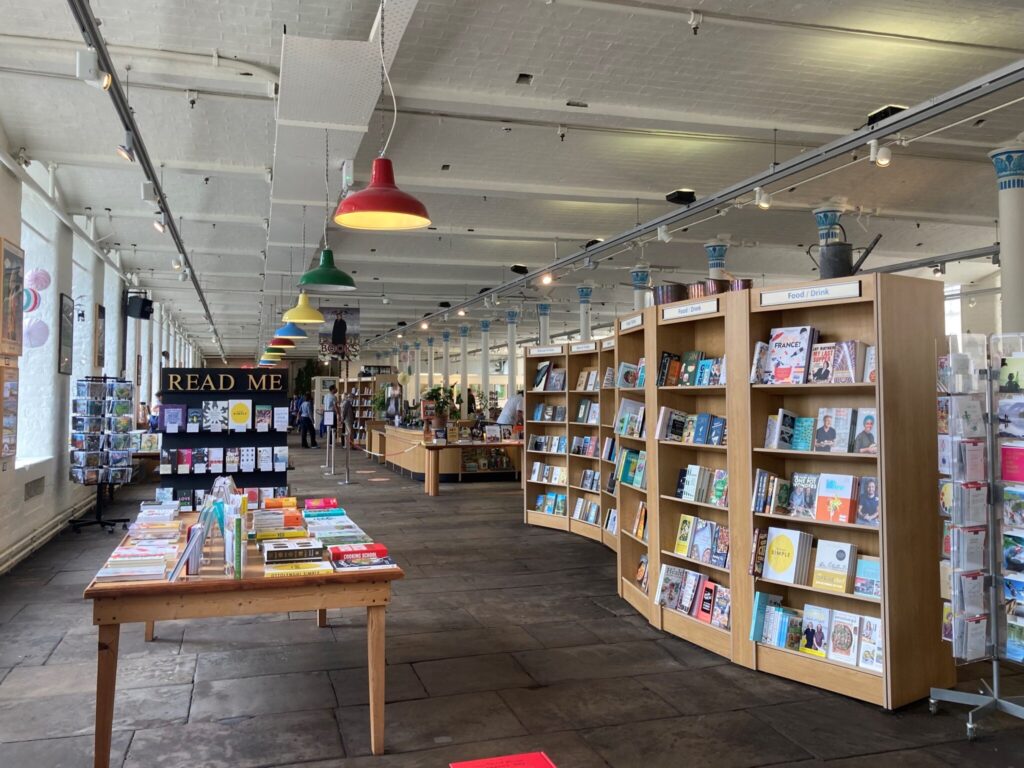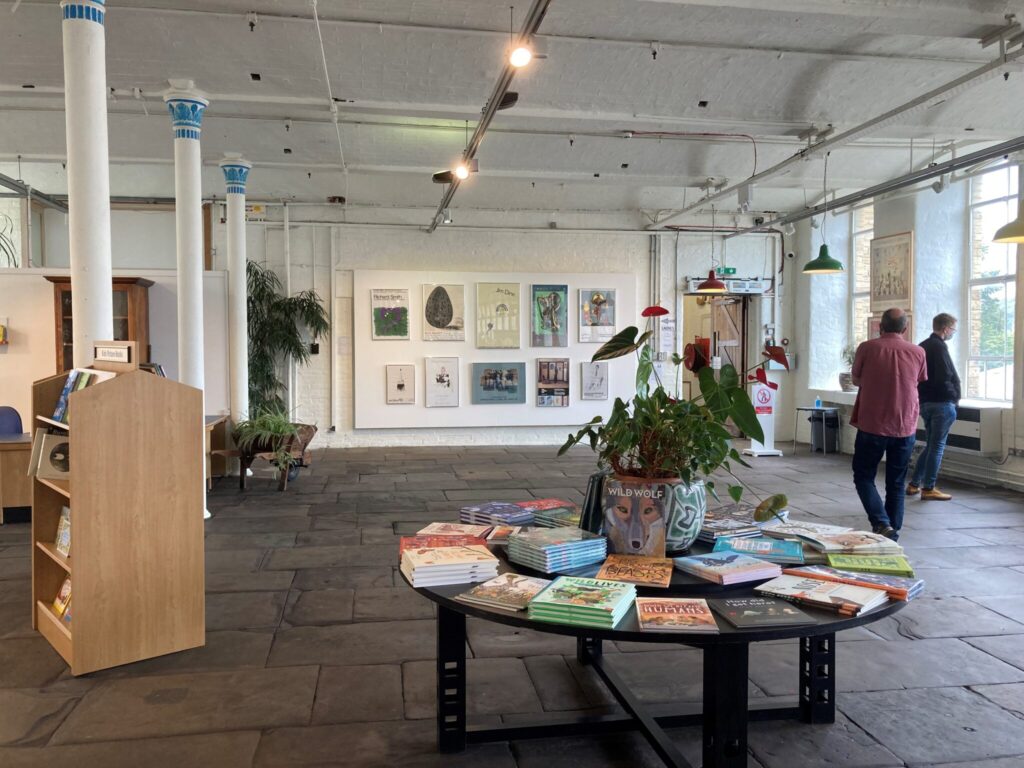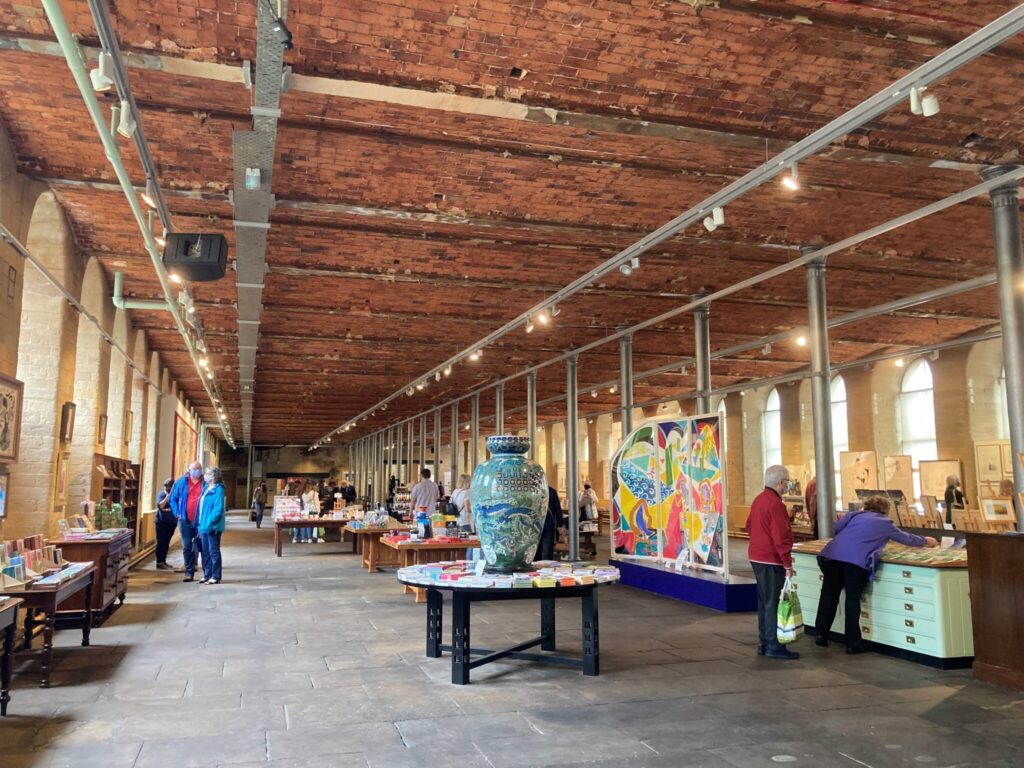
I don’t know a single Bradfordian who doesn’t have a soft spot for Salts Mill. Once a thriving textiles factory, it’s now a cultural hub, interspersed with historical remnants of its heyday back in the 1800s. It will bring out the bookworm, the artist and the interior designer in you, all in one go. There’s no entry fee either, which means it plays an important role in making the arts accessible to everyone.
Let me set the scene. You walk towards the lofty, four-floored building and climb up the steps, before stepping into a huge hall – 150 years ago, it would have been filled with mill workers spinning away the hours, but today, it’s crammed full of art supplies, books and stationery. Classical music drifts through the speakers and the walls are covered with some of local artist David Hockney’s most notable artwork. After entering, everyone seems to slow down, as they begin to peruse the items sprawled across the tables in front of them. Some people might feel uneasy in this hushed, art gallery-esque atmosphere, but most will sink into a state of inner calm.

Upstairs, it feels a lot more modern, with clean white walls and an abundance of plants and colourful lamps that hang from the high ceilings. There’s a bustling open-plan diner that serves food and drink on crockery branded with sketches of Hockney’s sausage dog. It’s the little touches like these that have given the mill a familiar and homely feel over the years. Tucked away at the back of the room is a homeware store crammed with items by world-renowned designers like Giovanni Alessi, and Charles and Ray Eames, alongside every type of kitchenware you can think of.
You’ll also pass through the most beloved bookshop in West Yorkshire. It’s undoubtedly one of the biggest pull-factors of the entire mill and is vast enough for you to lose yourself in books about everything from social justice to interior design, all without feeling an ounce of guilt at the fact you’ve just spent a good 45-minutes in there.
Venture a little further and you’ll uncover a miniature museum, a jam-packed antiques store and an intimate espresso bar, which shares its space with both a jewellery and outdoor clothing shop. Throw in two more art galleries, one of which is home to Hockney’s ‘Arrival of Spring’ exhibition and the other, which hosts rotating exhibitions by local artists, and you really do have the perfect set-up for an enriching Sunday.

Art and history go hand in hand at Salts Mill. The cultural additions certainly breathe new life into the building, but it’s the history that makes it all the more special, so much so that the mill and its surrounding village of Saltaire was added to the UNESCO World Heritage List in 2001. The architecture in the village has remained almost entirely intact and you can even see the extent to which the workers’ footsteps have worn away the steps leading down to the mill.
When Sir Titus Salt was planning his lucrative alpaca wool empire, at a time where Bradford’s textile industry was flourishing, he wanted to ensure that his workers resided in the best conditions possible. The answer was simple – locate the factory on the outskirts of the city centre and build an accompanying model village for his workers. This would prevent his staff from living in the filthy conditions associated with urban areas at the time.

The result was a compact, philanthropic village characterised by green space, neat terraced houses and a workplace that was within walking distance. The mill itself is conveniently squeezed between the railway tracks and the Leeds and Liverpool Canal – both allow easy access for visitors today. Saltaire remains a staple among town planners, who meticulously study Salt’s vision of embracing a good quality of life during the industrial revolution. He may have built the village in the mid-1800s, but he was clearly a man ahead of his time.

Eventually, when the UK’s manufacturing industry began to lose steam in the 1980s, the mill was closed and remained empty for a number of years. It wasn’t until Jonathan Silver came along in 1987 that the next chapter began. The local businessman revived its hallowed halls by filling them with boutiques, eateries and artwork, the latter of which was provided by his good friend David Hockney.
It soon became a go-to cultural destination, having gone from churning out 30,000 yards of cloth a day to providing the masses with a space to view beautiful and intriguing objects. Although Jonathan passed away 10 years later, the Silver family continued to keep the mill’s magic alive. It’s an enduring venue that continues to juxtapose the old with the new, quirky and exciting. I spent most of my weekends there as a child, worked there when I was a teenager and now, as an adult, it serves as a tranquil spot for whenever I need to clear my head.
Salts Mill opens up the arts to everyone and without any sense of elitism. Once you step inside, you’re free to soak up as much cultural goodness as you wish. You might pick up art supplies, nosy at the antiques or simply glance up at Hockney’s vibrant portraits while sipping your coffee.
Filed under: Community
Tagged with: accessible, art supplies, artwork, books, Bradford, cultural, Culture, David Hockney, diy, HUB, Salt’s Mill, saltaire, shop, village, weekend



Comments